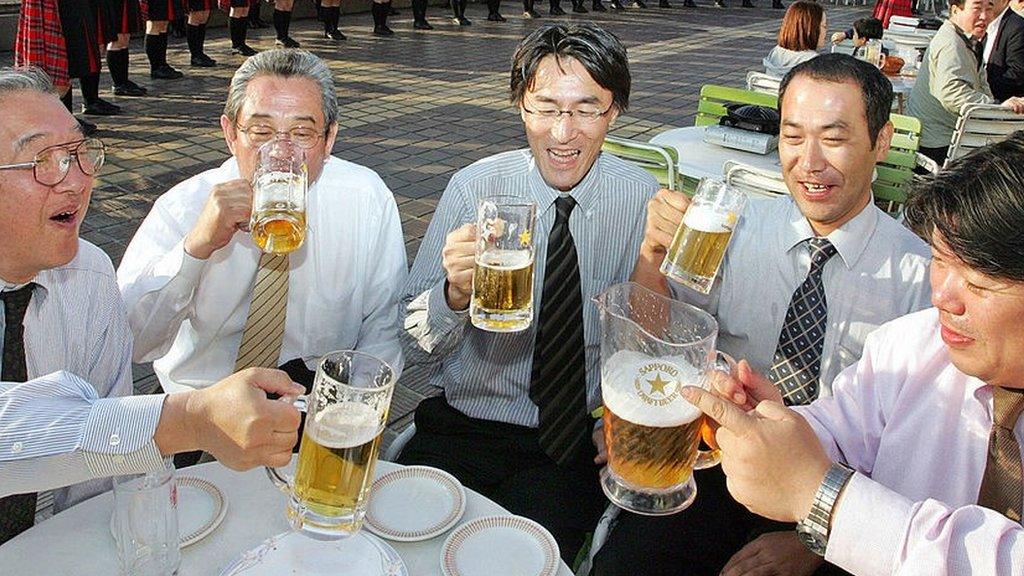Is Pokemon Go helping stop suicide at hotspot in Japan?
- Published
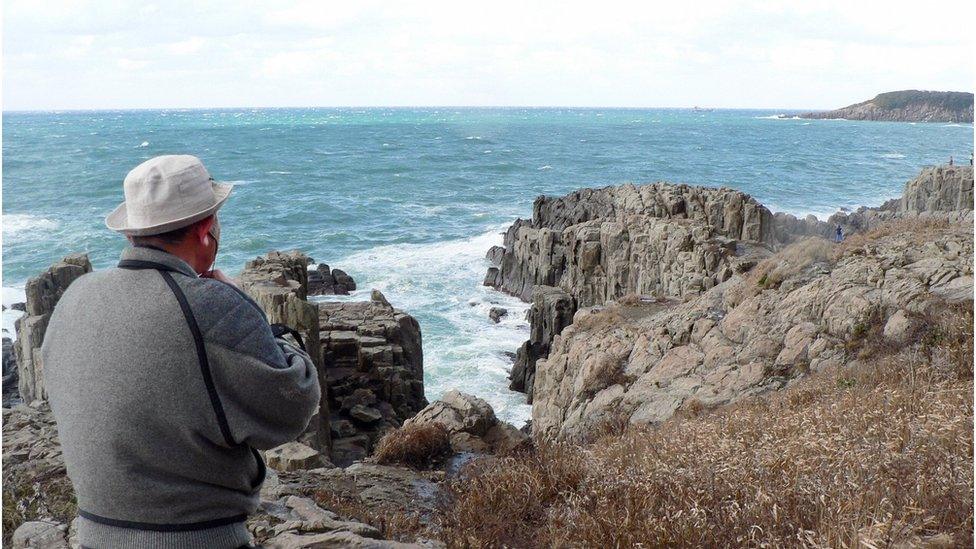
Tojinbo is also famous for its natural beauty
Japan has one of the highest suicide rates in the world, but one notorious beauty spot has noted a welcome and unexpected lack of deaths this year, a fact attributed to an unusual factor - Pokemon Go. The BBC's Simeon Paterson explains.
Tojinbo in Fukui prefecture is famous for its cliffs. Tall basalt columns rise dramatically out of the Japan Sea, drawing sightseers from around the region.
Sadly, it has also become notorious for another kind of visitor, often from further afield, drawn by its reputation as a suicide cluster site.
Fourteen people killed themselves there in 2016, and 12 the year before. But in the first months of this year, there have been no deaths at Tojinbo.
And Yukio Shige, a retired policeman who has gained cult status for his suicide-prevention patrols of the cliffs, has an interesting theory why.
He suspects Pokemon Go - the wildly popular mobile phone game in which people "catch" virtual characters in physical locations - could be behind it, drawing crowds in pursuit of rare creatures which "breed" there.
"The Pokemon Go effect is huge," he told Japanese news website Dot, external (in Japanese). "I hope we can continue at this pace with zero suicides."
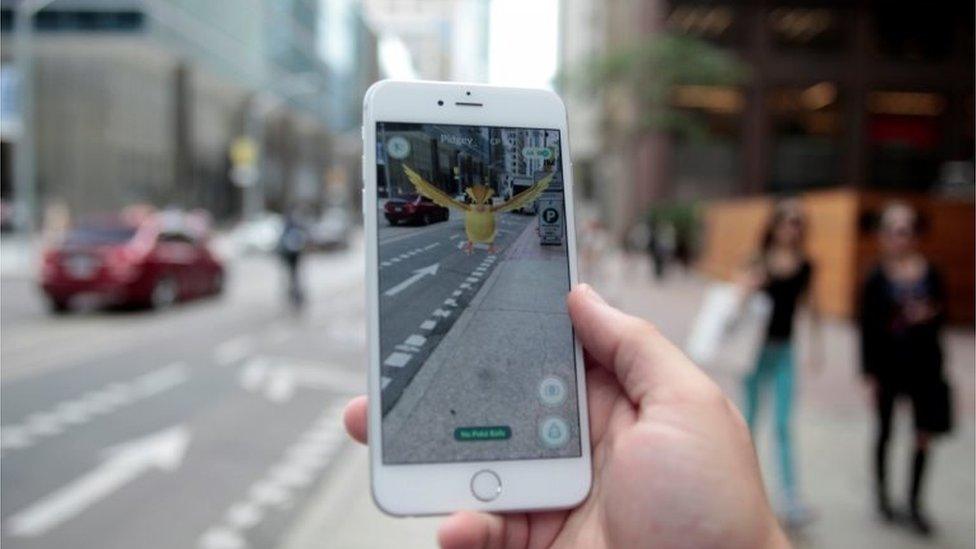
Pokemon Go characters are superimposed on a view of the world around the gamer
Vicki Skorji, director of Tell Lifeline, external, a counselling and mental health service for Japan's international community, told the BBC the decline was a positive development.
She said there were "probably a number of factors" at play - including just a chance decline - but that "it may be that the game has had an impact".
Most people who choose to take their own lives do so in a private place, often their own home, she says. Since the game came out there have been many media reports of crowds of gamers at Tojinbo, suggesting it may no longer hold the same appeal for those seeking isolation.
With media attention a major factor in drawing people to suicide hotspots, it is not impossible that different coverage of the area is also helping change its reputation.
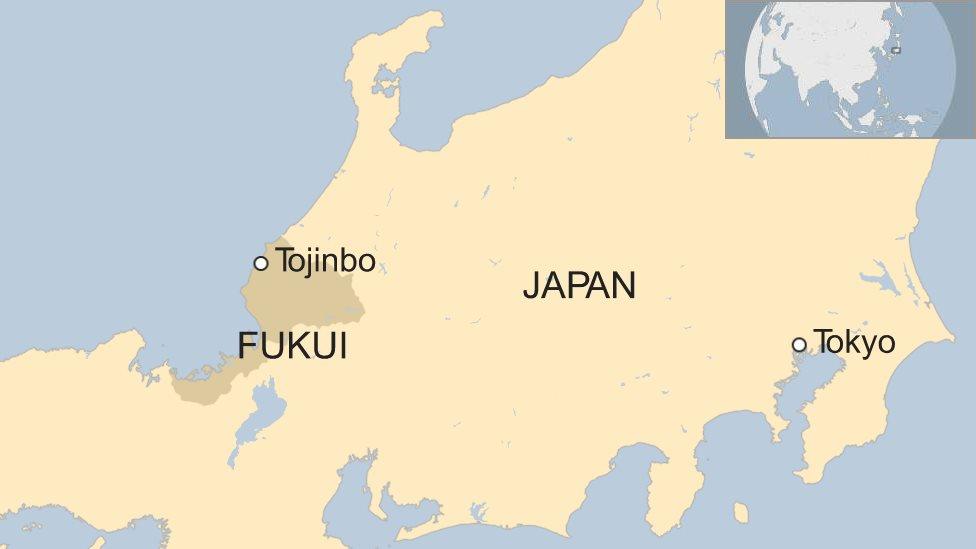
Tell's, external director also says the Tojinbo story comes at the same time as a very welcome decline in suicide across Japan, from about 33,000 a year at its peak a decade ago to about 21,000 now.
Specifically in Fukui prefecture in the first three months of 2017, six people killed themselves, compared with 15 in the same period last year, Ms Skorji says.
Improved government policy has played a large part in declining rates, she says, although there is still concern over increasing numbers of children killing themselves.
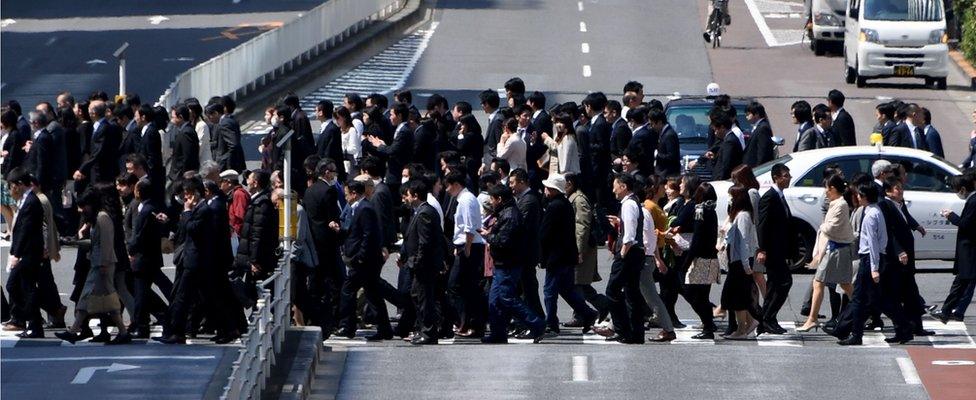
A culture of overwork is often cited as a factor in Japan's high suicide rates
This time of year can be especially tough.
Spring often sees a rise in suicides around the world, but it is particularly pronounced in Japan, Ms Skorji says, where April is the start of the school year, financial year and when many local companies take on new staff and move their existing staff around.
"There are a lot of stresses then," she says.
But with a greater willingness to talk about mental health, and an increase in services offering to listen, Japan may slowly be getting a grip on its suicide problem.
And whatever is causing the decline at Tojinbo, Yukio Shige and his team will still be on the cliffs looking for people in need of help.
- Published1 March 2017
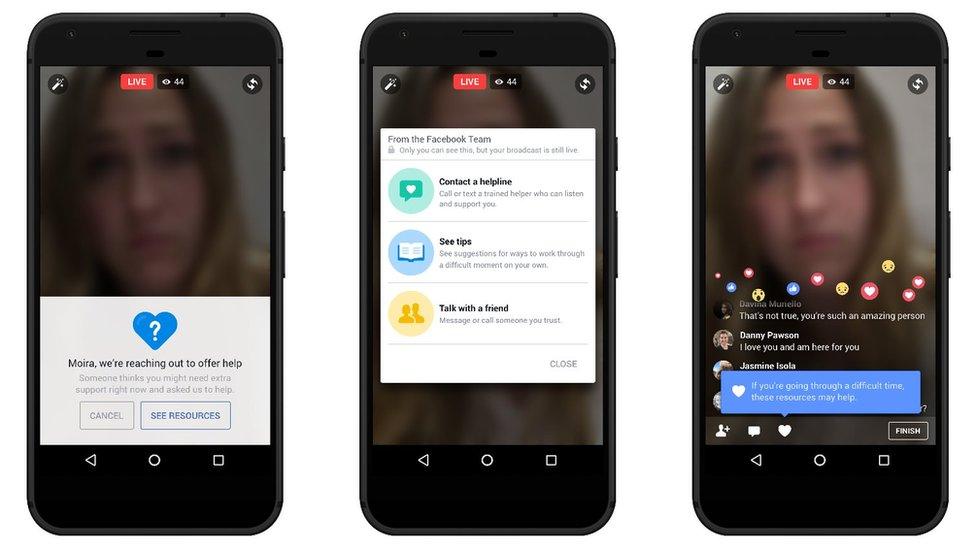
- Published12 July 2016

- Published14 December 2016
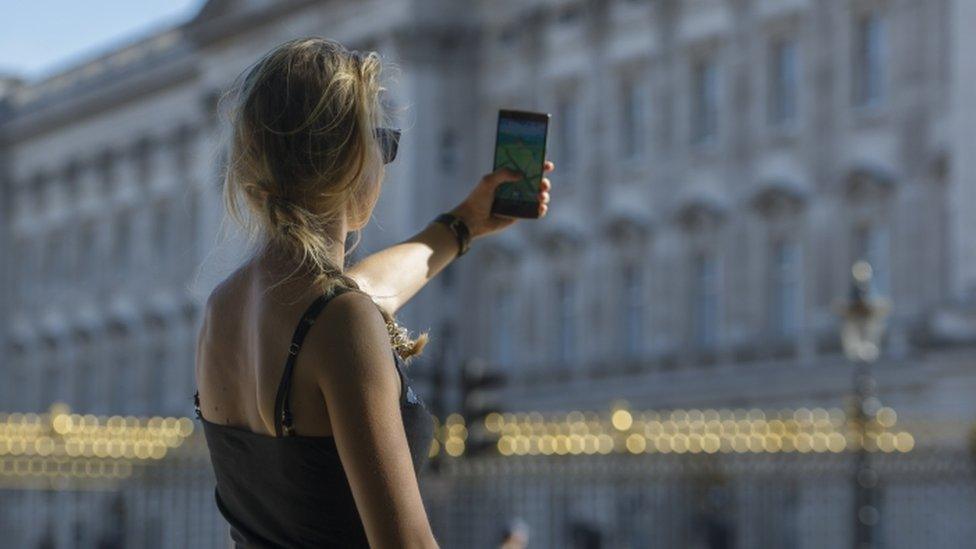
- Published20 July 2016

- Published31 August 2015
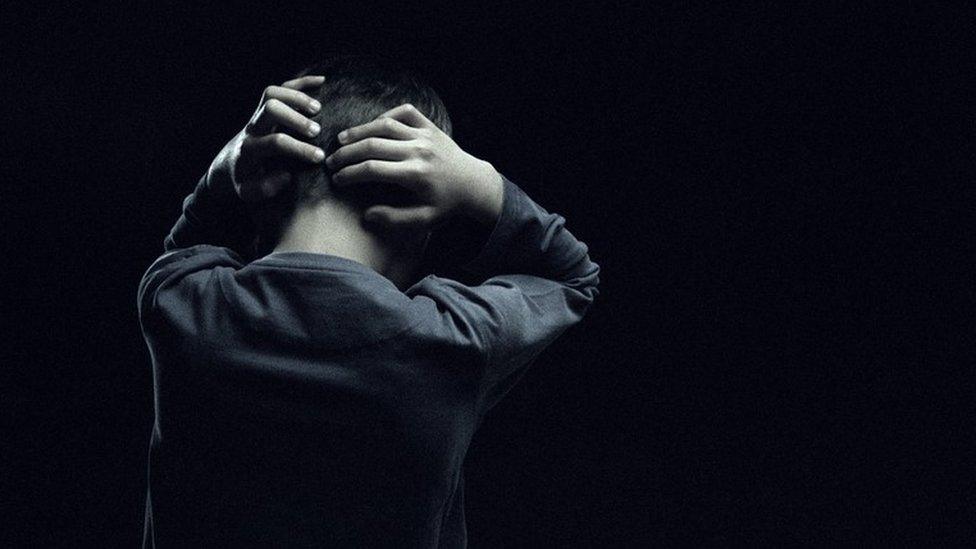
- Published3 July 2015
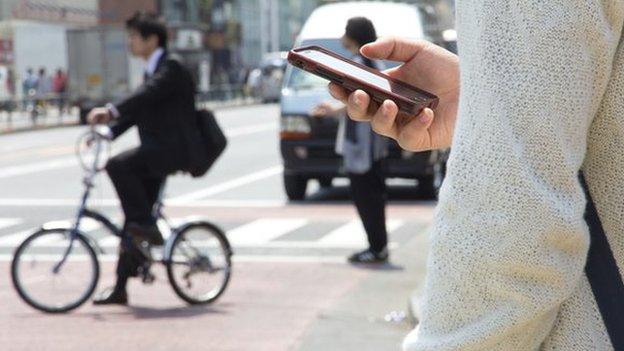
- Published30 December 2016
